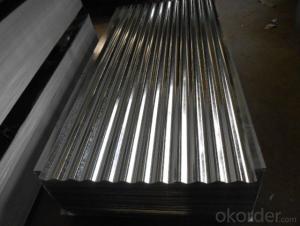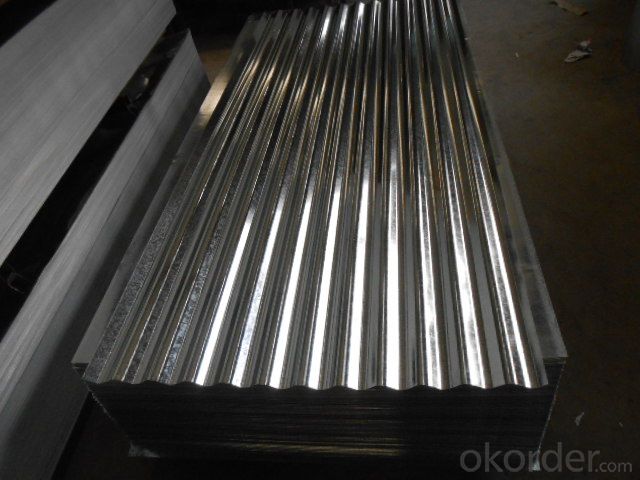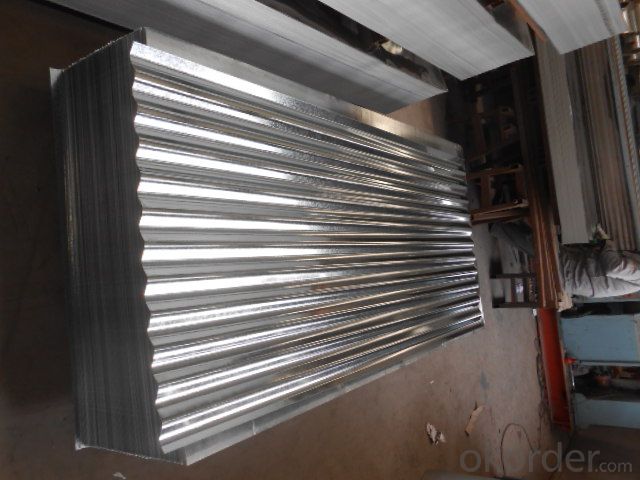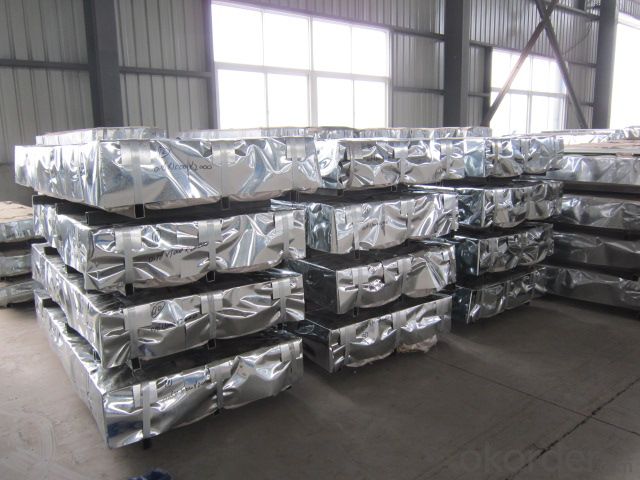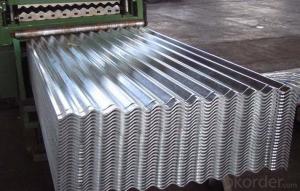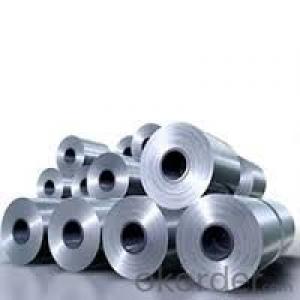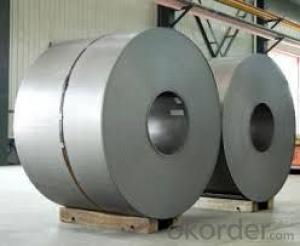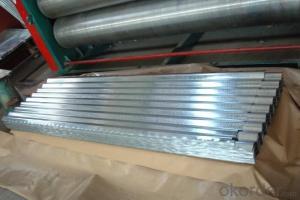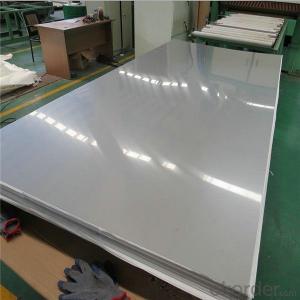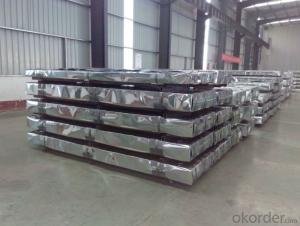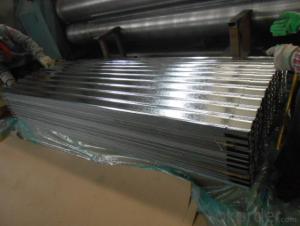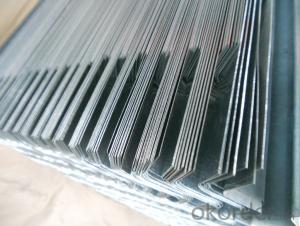Corrugated-Hot-Dipped Galvanized Steel Sheets
- Loading Port:
- Tianjin
- Payment Terms:
- TT OR LC
- Min Order Qty:
- 50 m.t.
- Supply Capability:
- 1000 m.t./month
OKorder Service Pledge
OKorder Financial Service
You Might Also Like
Description:
The Corrugated steel sheet is the steel plate which has been wave formed with the cold rolling treatment, trough especial coated dispose
Pressing steel panel with the clear line, and many colors for choice, suitable for any different building style materials, achieving satisfy effects;
Pressing steel panel can be freely incised, it can satisfy the especially designing demands. It apply on convenient construction, and anti-seismic performance, fire proof, waterproof, free of maintenance
Base sheet : galvanized steel sheet, pre painted galvanized steel sheet
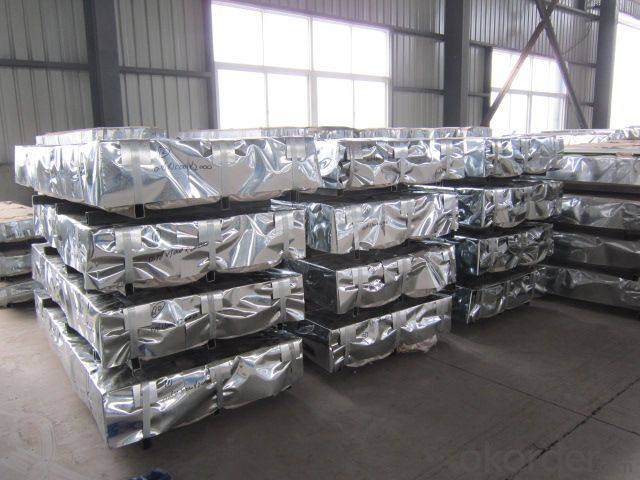
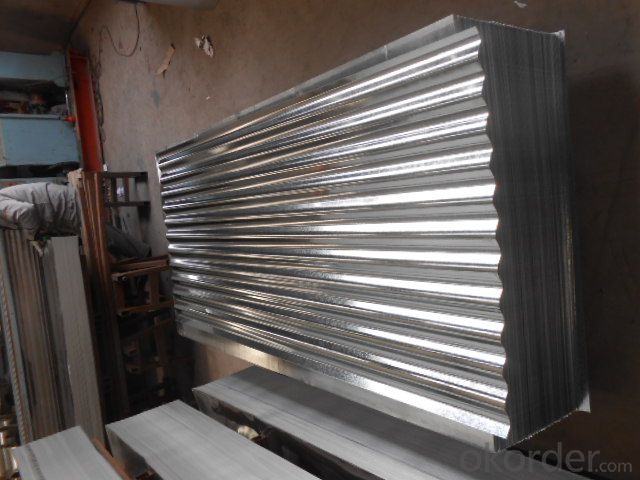
Application:
With excellent cold bending molded manufacturablity, good decoration effect, strong anti-corrosion ability, are also pollution-free and easily recycled. Accordingly, they can be used as final products and basic plates of color coated steel coils and widely applied in construction, home appliances, decoration
Pressing steel panel with the clear line, and many colors for choice, suitable for any different building style materials, achieving satisfy effects;
Product Specification:
Thickness tolerance: (+/-0.01mm)
Zinc coating: 50-180g/m2
Standard:JIS G 3302, SGCH
Package: 2- 3 ton/pallet
Specs: 0.14-0.8mm x 900mm x 2000mm
Width:700-1250mm( 750mm,900mm,1215mm,1250mm,1000mm the most common)
Surface:regular/mini/zero spangle, chromated, skin pass, dry etc.
Package:Standard seaworthy export packing: 3 layers of packing, inside is kraft paper,water plastic film is in the middle and outside GI steel ,sheet to be covered by steel strips with lock.
FAQ:
1.How many pieces for one package?
The pieces for one tone is decided by the thickness of the sheet, but we can make it according to your requirements in the reasonable range.
2. Do you have pallets for the package?
Yes, we must use pallets for the package in order to load.
3. Could you produce the sheets according to our design?
Yes, we can.
- Q: What are the potential drawbacks of using steel sheets?
- Some potential drawbacks of using steel sheets include their susceptibility to corrosion, their relatively high cost compared to other materials, their heaviness and difficulty in handling and transporting, and their limited flexibility and ability to be molded into complex shapes. Additionally, steel sheets may require additional maintenance and protection measures to prevent rusting and damage over time.
- Q: Can the steel sheets be used for storage cabinets?
- Yes, steel sheets can be used for storage cabinets as they are durable, strong, and provide excellent protection for stored items.
- Q: Can steel sheets withstand extreme temperatures?
- Yes, steel sheets can withstand extreme temperatures. Steel has a high melting point and is known for its excellent heat resistance, making it suitable for use in various industries that require materials to endure extreme temperatures.
- Q: What is the composition of steel sheets?
- Steel sheets are primarily composed of iron, with varying amounts of carbon, manganese, and other elements added to enhance its strength and durability.
- Q: What are the different color options available for steel sheets?
- The different color options available for steel sheets include various shades of gray, black, white, as well as a wide range of custom colors that can be achieved through paint or coating applications.
- Q: What is the difference between a smooth and patterned steel sheet?
- A plain and uniform surface characterizes a smooth steel sheet, devoid of any visible patterns or textures. It boasts a consistent and sleek appearance, rendering it ideal for situations that call for a clean and contemporary look. In contrast, a patterned steel sheet showcases a myriad of designs or textures that are either embossed or etched onto its surface. These patterns can range from simple geometric shapes to intricate motifs. People often opt for patterned steel sheets due to their decorative appeal, as they have the ability to enhance the visual interest of a space. They are commonly employed in architectural elements, such as wall panels or ceiling tiles, to create a distinct and artistic effect. When it comes to functionality, smooth steel sheets might offer slightly superior corrosion resistance due to their smoother surface. This makes them well-suited for applications that require protection against rust, such as in outdoor or marine environments. On the other hand, patterned steel sheets may exhibit reduced corrosion resistance due to the variation in surface texture, potentially providing less safeguarding against rust. In conclusion, the decision between a smooth and patterned steel sheet hinges on the desired aesthetic, functional requirements, and the intended application.
- Q: Are the steel sheets easy to maintain?
- Steel sheets are typically easy to maintain, as they possess durability and corrosion resistance, thus necessitating minimal upkeep. A simple cleaning using mild detergent and water usually suffices to keep them looking pristine and shiny. Moreover, steel sheets eliminate the need for painting or staining, further diminishing maintenance demands. In situations involving scratches or minor damages, repairs or buffing can be effortlessly executed. All in all, steel sheets are an excellent choice for diverse applications, requiring little maintenance.
- Q: What is a cold rolled sheet with plastic sprayed?
- After the cold rolled steel sheet is finished, the surface treatment needs to be carried out, including:1: electroplating: zinc plated, nickel plated, copper plated, gold plated, chrome plated,2: immersion plating: black, hot galvanizing3: spray: spray paint, spray, baking paint,4: polishing, point solution polishing, shot peening, shot blasting
- Q: Are steel sheets suitable for furniture manufacturing?
- Yes, steel sheets are suitable for furniture manufacturing. Steel is a durable and versatile material that can be manipulated into various shapes and sizes, making it ideal for creating furniture pieces. It offers strength and stability, making it suitable for both indoor and outdoor furniture. Additionally, steel sheets can be coated or painted to enhance their durability and aesthetic appeal.
- Q: Can steel sheets be used for fire-rated doors?
- Fire-rated doors can indeed utilize steel sheets. In fact, steel is extensively employed in the creation of fire-rated doors due to its exceptional strength, longevity, and fire-resistance characteristics. Generally, steel sheets employed in fire-rated doors are crafted with multiple layers of fire-resistant substances, like gypsum or mineral core, which are placed between the steel sheets. This method of construction effectively impedes the propagation of fire and smoke, ensuring a dependable barrier in case of a fire. Furthermore, steel is renowned for its structural integrity, rendering it an appropriate option for fire-rated doors that must endure elevated temperatures and pressure.
Send your message to us
Corrugated-Hot-Dipped Galvanized Steel Sheets
- Loading Port:
- Tianjin
- Payment Terms:
- TT OR LC
- Min Order Qty:
- 50 m.t.
- Supply Capability:
- 1000 m.t./month
OKorder Service Pledge
OKorder Financial Service
Similar products
Hot products
Hot Searches
Related keywords
